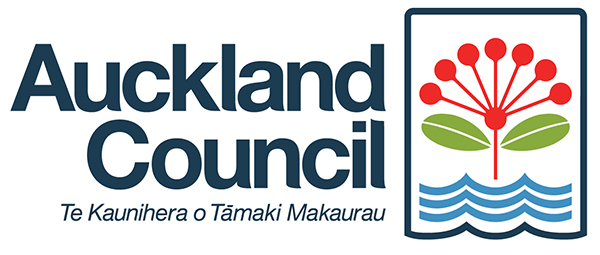 I’m always keen for any chance to strategise and imagine the future with other disabled people and so it was wonderful to hear about the similarities and differences between Aotearoa and Australia when I attended the Alter State festival in Melbourne.
I’m always keen for any chance to strategise and imagine the future with other disabled people and so it was wonderful to hear about the similarities and differences between Aotearoa and Australia when I attended the Alter State festival in Melbourne.
A biennial disability arts festival, a partnership between Arts Centre Melbourne and Arts Access Victoria, Alter State ran from 2 to13 October across eight venues, including Arts Centre Melbourne and National Gallery of Victoria.
 The theme was Disabled Futures: a glimpse of what’s to come, and it opened with a welcome to country and smoking ceremony led by Wurundjeri Elder-in-Residence Professor Aunty Diane Kerr, followed by an opening night of performances of Deaf and disabled indigenous artists.
The theme was Disabled Futures: a glimpse of what’s to come, and it opened with a welcome to country and smoking ceremony led by Wurundjeri Elder-in-Residence Professor Aunty Diane Kerr, followed by an opening night of performances of Deaf and disabled indigenous artists.
The following two days featured a symposium filled with curated conversations, panel discussions and presentations by Deaf and disabled artists, who showcased their arts practice and discussed their experiences of making art as Deaf and disabled people. It was wonderful to meet other Deaf and disabled artists.
There was also an opportunity to workshop our vision for disabled futures in 2075 and while I appreciate the imaginative possibility of thinking 50 years into the future, I do wish we had been tasked with imagining our more immediate futures.
Festivals always provide opportunities for valuable conversations, and funding and disability supports were a couple of the issues people were talking about. Distressingly, both in Aotearoa and Australia, we’re being intentionally and systemically targeted as a way to cut costs. This is having a significant impact on our lives and capacity as artists.
A strong line-up of shows and exhibitions
The Alter State programme featured a strong line-up of shows and exhibitions. I absolutely loved Amy Claire Mills’ quilts, which were on display at Art House in North Melbourne. Featuring common sayings such as “What’s wrong with you?” and “Have you tried?”, they reframe unwelcome narratives.
 I was gutted to miss their sculptural work, which was part of Alter State’s closing event called Disabled and Sexy.
I was gutted to miss their sculptural work, which was part of Alter State’s closing event called Disabled and Sexy.
From what I saw, the ways that arts organisations in Australia and Aotearoa are creating accessibility for audiences are similar, with relaxed performances, Sign Language interpretation and audio description available.
The difference is that there is more funding available to support and more opportunities for Deaf and disabled artists (in Victoria at least).
Restless Dance Theatre presented their work, Private View, which explored themes of love, sex and desire performed by a cast of professional (and paid) disabled performers with learning disabilities and non-disabled performers.
The audience was invited to become voyeurs as characters challenged perceptions and took control of their private lives in a powerful and intimate performance that was funny, tender, poignant and sexy.
It felt significant to see disabled artists performing at Arts Centre Melbourne, being recognised as professionals making high-calibre work – sadly, something that is often still not expected of us.
It was a busy week, full of Deaf and disabled-led artistry, and it was great to be attending alongside Nicola Owen (Audio Described Aotearoa) and artists Henrietta Bollinger and Jelly O’Shea.
Auckland's disability-led company Touch Compass featured in Alter State’s digital launch in 2021 and Rodney Bell performed in 2022. Unfortunately, there were no artists from Aotearoa in this year’s festival but hopefully, that will be remedied in the next Alter State festival in 2026.
 One of the unexpected joys of the symposium was seeing how Deaf and disabled people took up space at Arts Centre Melbourne: we were not the minority. I love how Deaf and disabled people can morph a room into crip space, re-arranging tables and chairs to suit signed conversations, mobility aids and service dogs. Where time is fluid and structured at the same time; where microphones are used; and where you know you can show up however you need to.
One of the unexpected joys of the symposium was seeing how Deaf and disabled people took up space at Arts Centre Melbourne: we were not the minority. I love how Deaf and disabled people can morph a room into crip space, re-arranging tables and chairs to suit signed conversations, mobility aids and service dogs. Where time is fluid and structured at the same time; where microphones are used; and where you know you can show up however you need to.
Infrastructure supports this and I was interested to note in Melbourne more use of tactile indicators inside buildings (those bumpy dots you may have noticed at pedestrian crossings and steps), braille on some street signs in the CBD, and ambulatory accessible toilets (in addition to wheelchair accessible toilets), which are standard toilet stalls that include grab rails.
I’m excited about disabled futures here in Aotearoa too. I’m busy working on our soon-to-be-launched Deaf and Disabled Artists Initiative so watch this space. And in the meantime, you can see disabled artistry at Nelson Arts Festival with Touch Compass presenting Lusi Faiva’s brilliant work Aiga, and Equal Voices Arts performing Where our Shadows Meet in Kirikiriroa.


